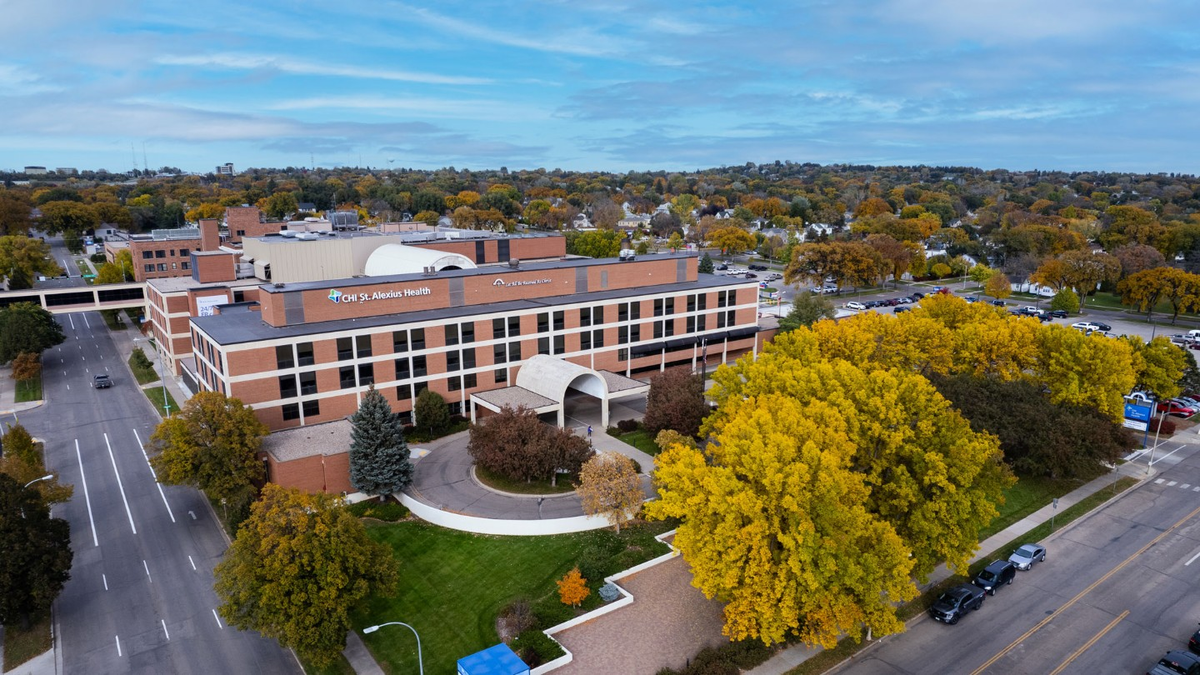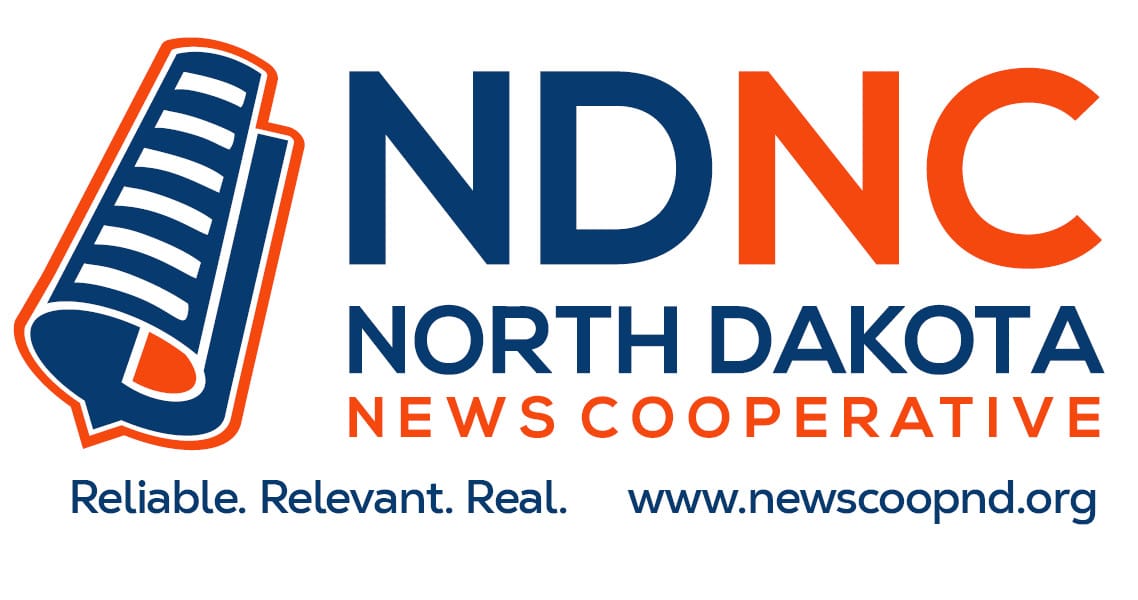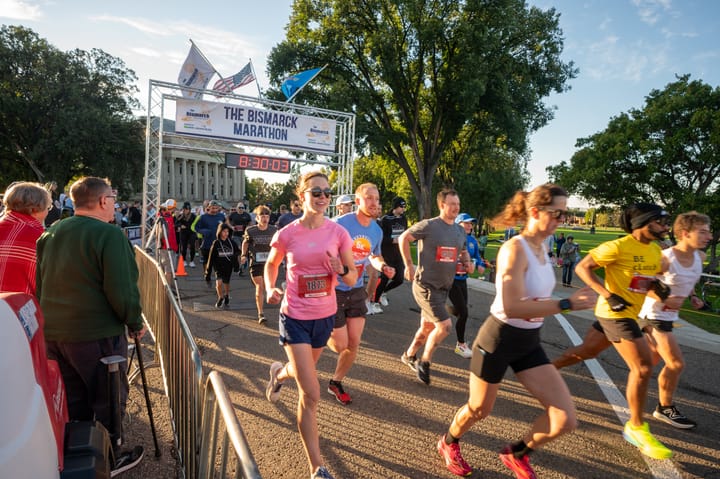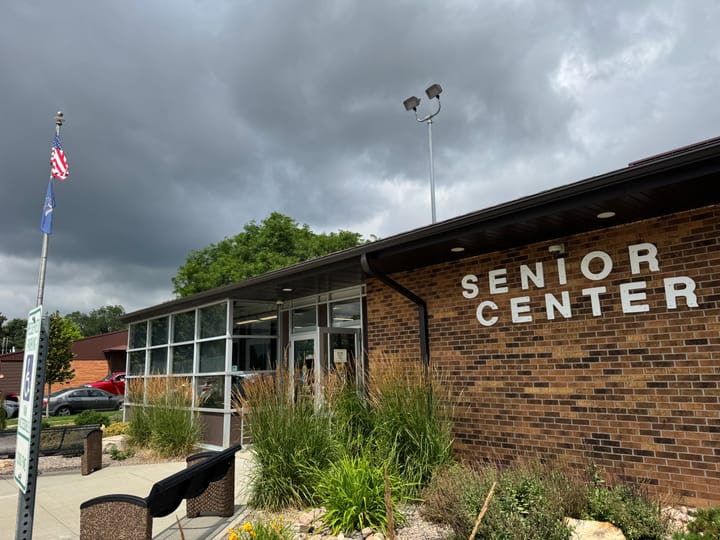North Dakota well-positioned to deal with proposed Medicaid changes
Implementing work and eligibility requirements biggest challenge

Medicaid reforms in President Donald Trump’s “One Big Beautiful Bill” are unlikely to lead to major challenges for the state’s healthcare system, but implementing new work and eligibility requirements could lead to extra bureaucratic headaches.
Concerns also remain that some people may lose coverage because of the changes and slip through the cracks of the healthcare system.
The bill, passed by the House of Representatives May 22 by a vote of 215-214, includes work requirements of 20 hours of verified work, study or volunteer activity per week for those without a disability between the ages of 19 and 64.
The bill now goes to the Senate for what is expected to be another long deliberation process.
Under the bill's current formulation, states must implement the new Medicaid work requirement system by the end of 2026.
The need to approve additional Medicaid eligibility specialists for the Department of Health and Human Services and amend budget allocations could potentially be addressed by North Dakota legislators at a special session.
Since the 69th Legislature lasted 74 days, lawmakers have up to six days to use for a special session to deal with Trump administration funding cuts and rule changes.
“We want to ensure that this program exists long term for the very people it was intended to help, and those are the disabled, the elderly, and pregnant moms with kids,” said Rep. Julie Fedorchak, R-ND.
Data from healthcare information provider KFF shows that, 44% of adults on Medicaid in North Dakota work full-time, 28% part-time and 28% are unemployed.
Only around 10% would fit into the 19 to 65 category of adults without disabilities getting Medicaid.
Several exemptions from the work rules were included in the bill, including for enrolled tribal members, pregnant women and foster youth.
Around 105,000 children and adults are enrolled in Medicaid in North Dakota.
Medicaid expansion was implemented here in 2014 and around 24,000 adults are covered in that expansion program.
The Congressional Budget Office (CBO) estimates the changes would increase the number of people nationwide without health insurance by between 7.7 million to 8.6 million by 2034.
Of those, the projections include around 1.4 million who haven’t had their immigration status verified, but who are potentially getting coverage in 14 states and the District of Columbia where state-level eligibility rules vary, according to the CBO.
KFF estimates that the uninsured population in North Dakota could increase from 10,000 to 17,000 people in the next decade due to the changes.

Tim Blasl, president of the North Dakota Hospital Association, said it is a little early to tell what the impacts might be to hospitals because the bill will also have to pass the Senate, but he is concerned about people falling through the cracks.
“At the end of the day, we’re going to see billions of dollars being cut from Medicaid and other programs, so that is a huge concern if numbers (of people) are cut out of the system,” Blasl said, referring to the CBO estimates.
“When people don’t have coverage, they don’t get care,” Blasl said. “It’s a concern to the association, it’s a concern to hospitals, physician groups, and anybody that's impacted by treating Medicaid beneficiaries.”
Fedorchak said from what she learned in her conversations with providers in the state, not many will be impacted by the new rules.
“I don't sense from the providers that they feel like there's a lot of folks who are not eligible getting benefits,” she said. “With those eligibility tests, the people that might be impacted by these reforms would be folks receiving the benefits who don't qualify and those who aren't willing to work.”
Nikki Wegner, head of the North Dakota Long Term Care Association, said it was so early in the process that it would be difficult to gauge what, if any, impacts would be felt at long-term care facilities.
One change to Medicaid that could have an impact is a requirement for states to redetermine the eligibility of enrolled individuals every six months, rather than annually.
“Having people revalidate whether they’re still eligible for Medicaid every six months could pose an issue for us,” Wegner said. “We already see a strain on the system with the paperwork and getting that all through, so that adds more complexity and time to it.”
Both Blasl and Wegner said their groups have been in constant contact with North Dakota’s congressional delegation and the state’s Medicaid director about what the changes could mean for the state.
Fedorchak said she will continue to work with the Centers for Medicare & Medicaid Services to reduce paperwork and reporting requirements burdens for North Dakota healthcare providers and that this is “top of mind going forward.”
Staffing requirement moratorium
One positive for long-term care facilities coming out of the bill, according to Wegner, includes a moratorium on implementing a Biden administration rule requiring facilities to meet minimum staffing levels for registered nurses and total nursing staff hours per day.
This rule was going to be difficult for facilities in North Dakota to meet due to workforce challenges.
“That’s a really good win,” Wegner said. “It gives us some breathing room so that we can continue to work on workforce solutions in the meantime if it does come to fruition after 10 years.”
Fedorchak said the policy could have led to some nursing homes shutting down in the state.
“It would be impossible for them to meet that mandate,” she said. “It's out of touch with the conditions on the ground in many states, especially North Dakota, and rather than improving care, it would have significantly decreased the quality of care, because it would have reduced access substantially.”
Only 13% of North Dakota residents are insured under Medicaid.
The largest group is those in nursing homes, at 53% of all Medicaid recipients in the state, but these would not be impacted by the new work requirements or other aspects of the bill.
Little provider tax impact
One reason North Dakota is unlikely to see widespread impacts is because it does not participate in the provider tax system for hospitals and long-term care facilities, institutions serving the majority of Medicaid patients
Some states use the provider tax system to create an additional funding stream to cover Medicaid costs at those facilities, with the federal government matching that revenue at a certain rate.
New rules basically restrict expansion of the rates states already get and do not allow more states to use the system, meaning North Dakota could not adopt provider taxes backed by federal guarantees going forward if the change survives the Senate.
“We don't have a provider tax, but you know, we may be limited going forward in the future, and that's a concern of ours,” Blasl said. “We've had that discussion in the state over the years, but it's just something that's never been implemented.”
Areas with higher coverage rates
One aspect that bears watching is how hospitals and health facilities in parts of the state with the highest Medicaid coverage rates are impacted by any changes and future cuts.
Harold Miller, president and CEO of the Center for Healthcare Quality and Payment Reform out of Pittsburgh, said many small rural hospitals across the country are under pressure to eliminate services or close. Around 200 rural hospitals have closed in the past two decades.
His organization estimates that five rural hospitals in North Dakota are at high risk of closure, while 11 are at some risk.
Future Medicaid cuts could increase pressure on those with tight budgets, Miller said.
“If there is a reduction in Medicaid and there's a reduction in Medicaid revenues to that hospital, then if the hospital is already losing money, the hospital is going to be worse off,” Miller said.
“The issue is whether or not whatever is done at the federal level to Medicaid actually results in a reduction in Medicaid revenues to the hospital, and that's going to be dependent on what the state does, and dependent on what kinds of services the hospital delivers,” Miller said.
The highest rates for enrollment in the state include Sioux County, where upwards of 40% of all residents rely on Medicaid for their healthcare coverage. Rolette County, with 36% and Benson County, with 33% also have high rates.
All three of these areas are counties that include tribal lands - the reservations of Standing Rock in Sioux, Turtle Mountain in Rolette, and Spirit Lake in Benson - and those numbers are reflected in local hospital data as well.
The final version of the bill passed by the House includes an exemption for tribal members on Medicaid to comply with the work requirement rule, however, limiting potential impacts to local hospitals.
Presentation Medical Center in Rolla has around 30% of patients on Medicaid, the highest rate for any hospital in the state. This is followed by St. Alexius Health in Devils Lake with 24.5% of patients using Medicaid. Jacobson Memorial Hospital Care Center, just north of Standing Rock, has a 12% rate of Medicaid patients, putting it at the 6th highest.
All three facilities are currently losing money on Medicaid patients.

Most hospitals across the state are not exposed to potential losses of patients covered by Medicaid, however.
Reed Reyman, who oversees St. Alexius hospitals in Bismarck and Turtle Lake, about an hour’s drive north, said overall the state does an “excellent job” ensuring funding is used correctly and rooting out fraud. Medicaid patients only amount to around 5% or less at these facilities.
“Some of the stuff that is coming out of the federal government, I don't think will affect us, at least right now,” Reyman said. “Of course, there's always the fear of any cuts. Everybody's afraid of cuts, but we're not hearing anything specific right now.”
Reyman said his biggest fear, looking across the country, is people in inner cities or low-income people who need care potentially losing coverage or removing themselves from care.
“Whenever you hit Medicaid, those are the people forced to go to the emergency room for care, and then a lot of times they don't get the care they need, or they wait a long time and or they just don't go get the care,” he said.
The North Dakota News Cooperative is a nonprofit news organization providing reliable and independent reporting on issues and events that impact the lives of North Dakotans. The organization increases the public’s access to quality journalism and advances news literacy across the state. For more information about NDNC or to make a charitable contribution, please visit newscoopnd.org. Send comments, suggestions or tips to michael@newscoopnd.org. Follow us on Twitter: https://twitter.com/NDNewsCoop.



